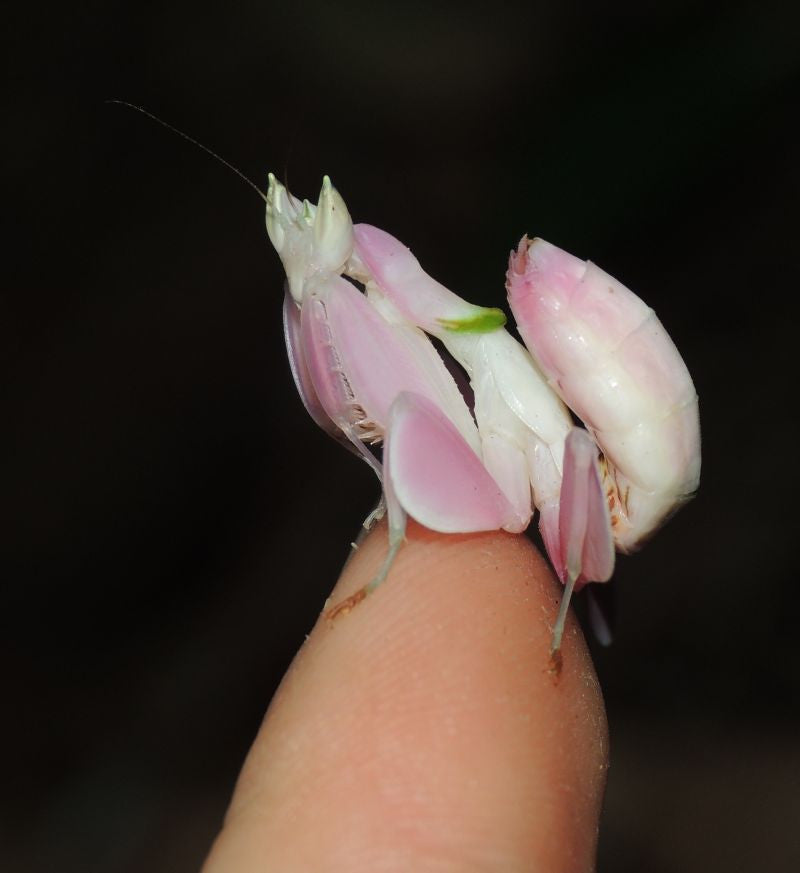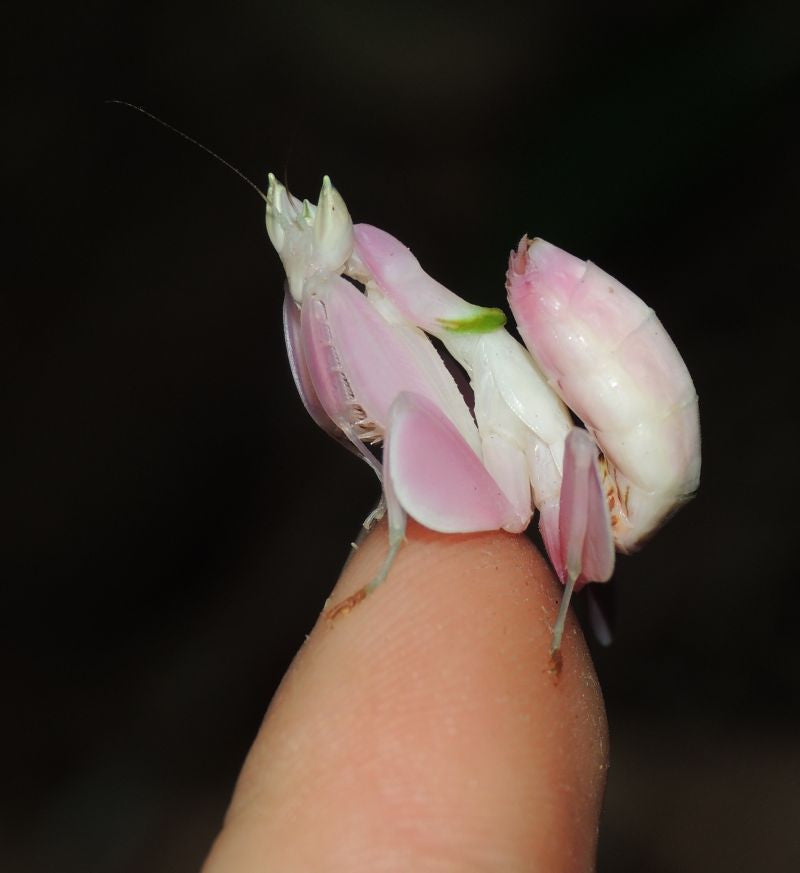
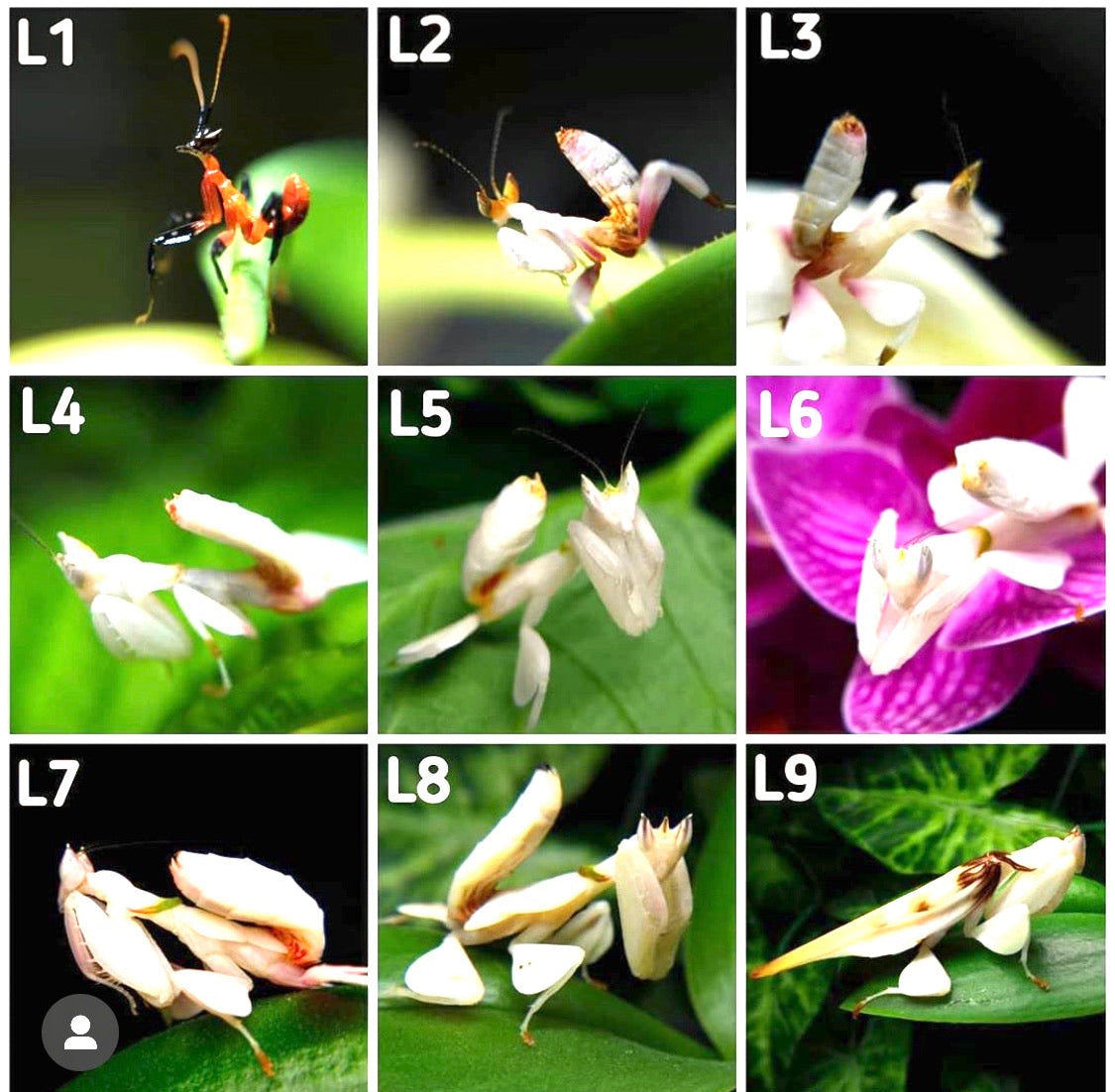
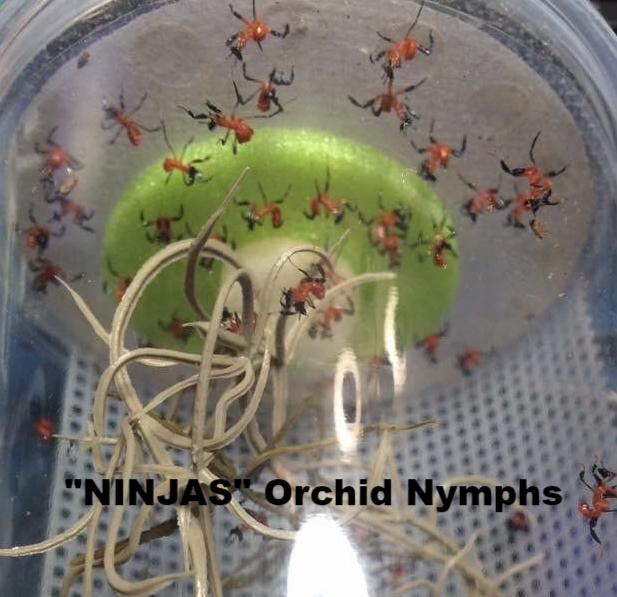
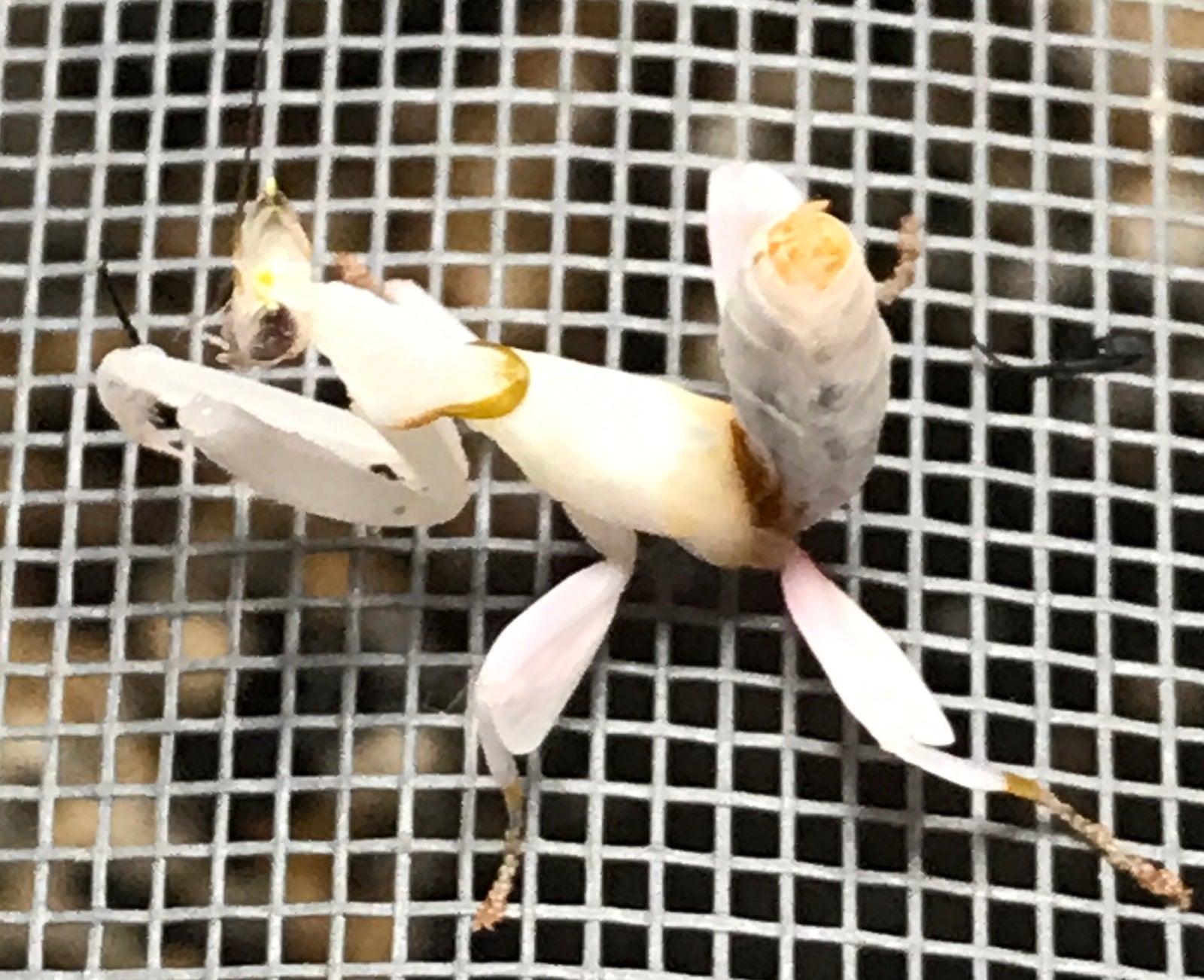
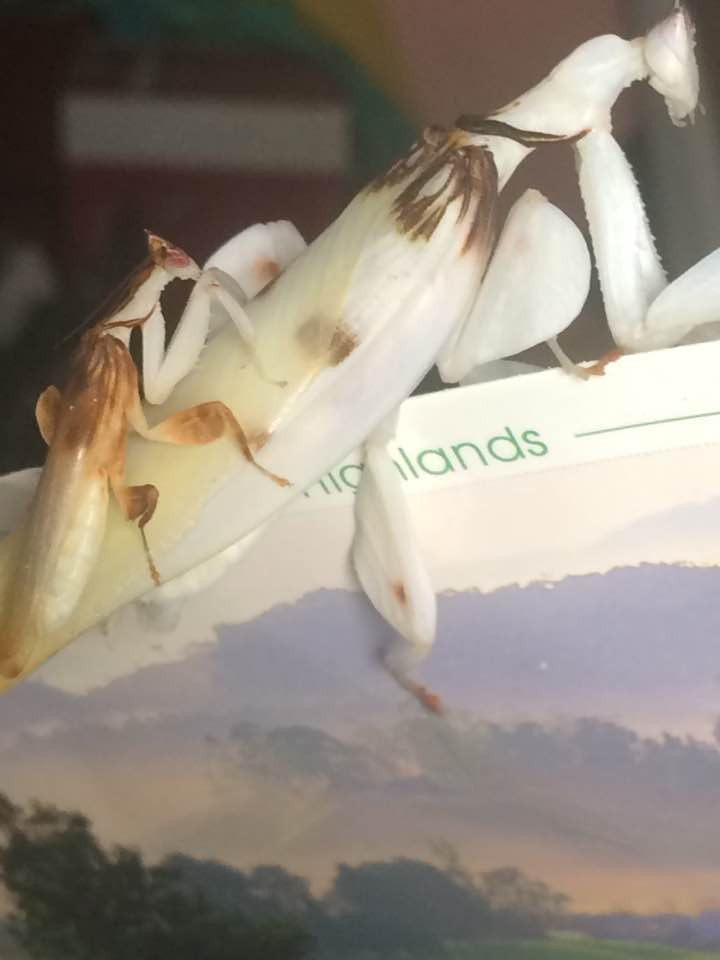
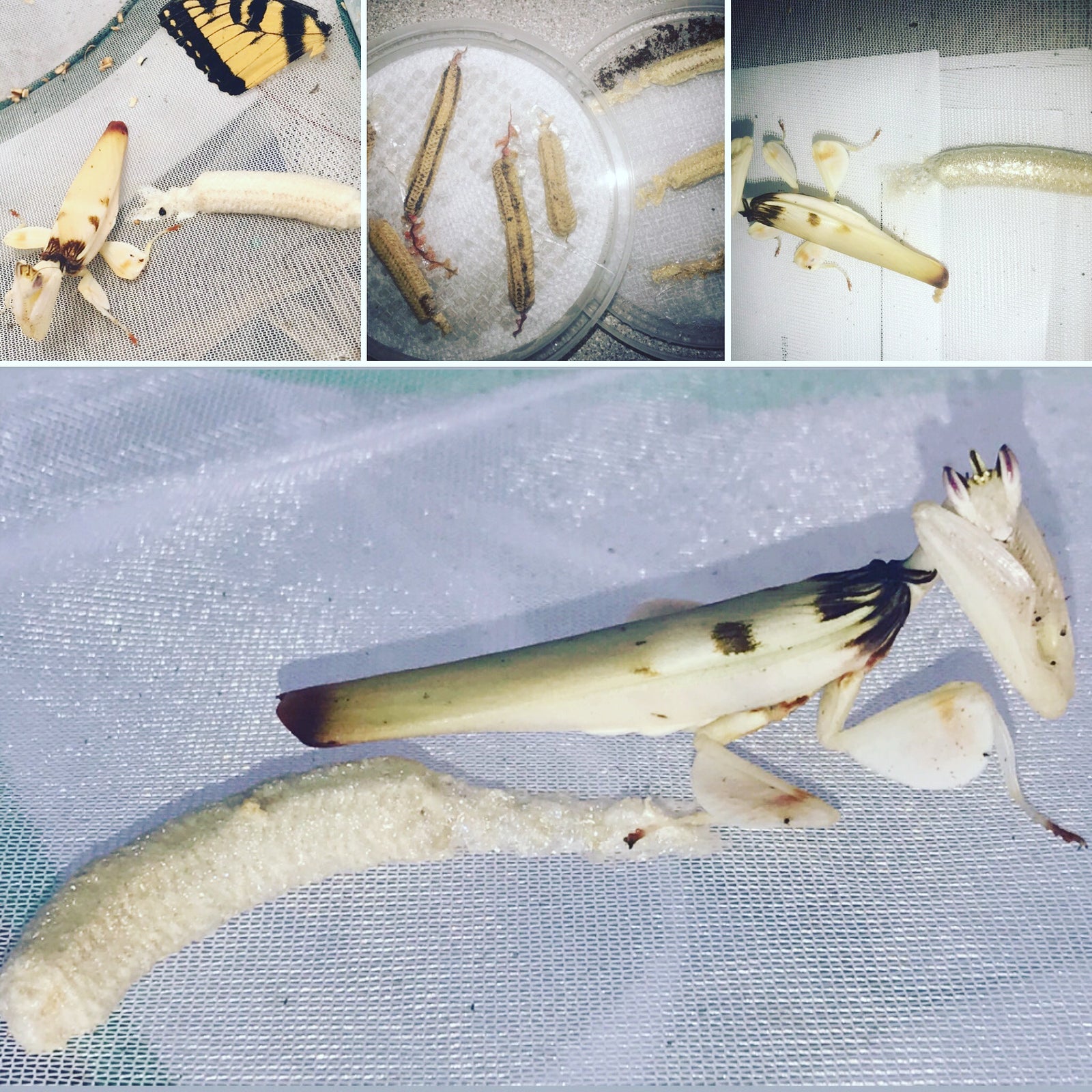
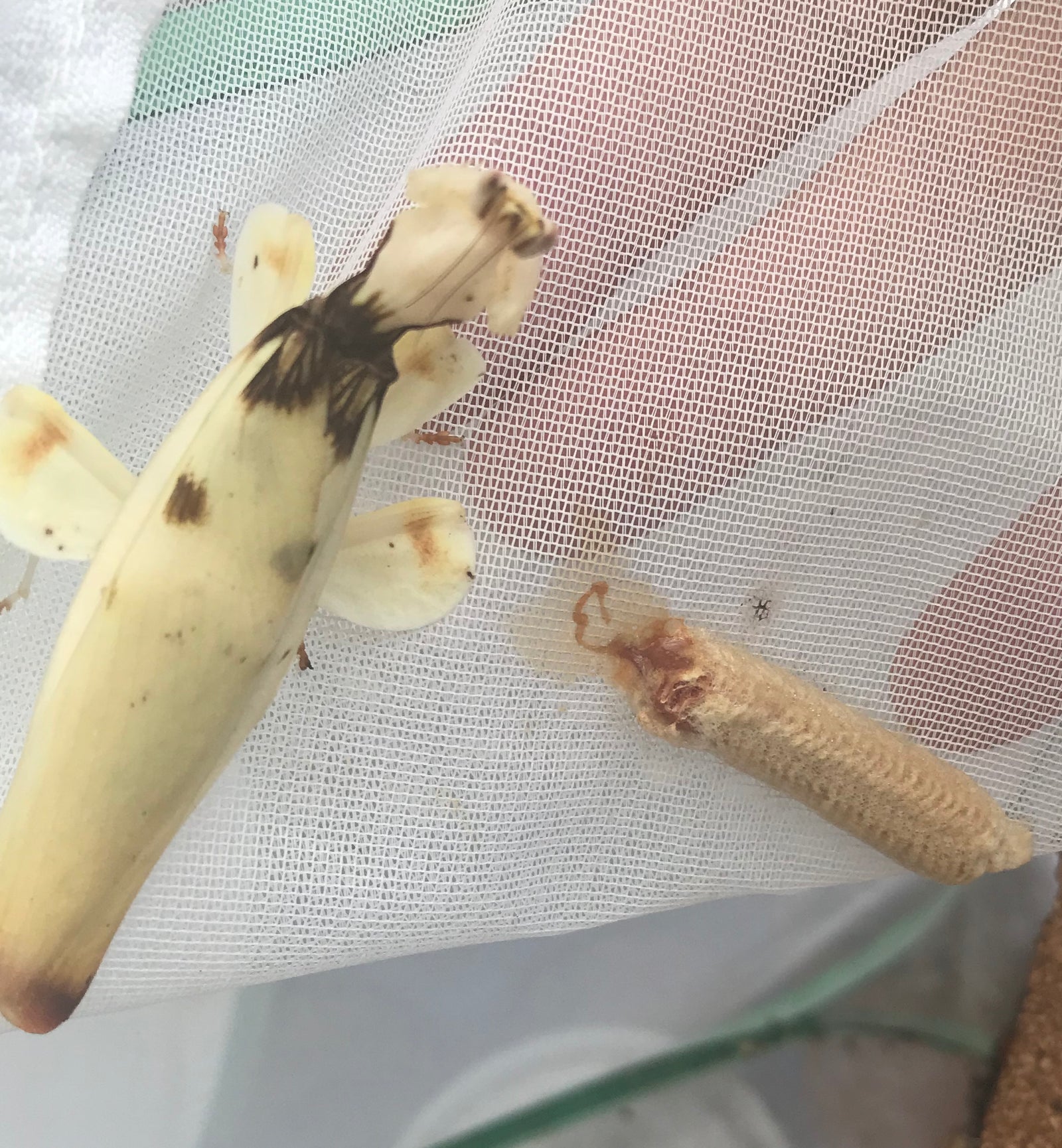
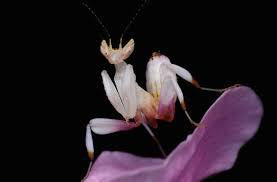
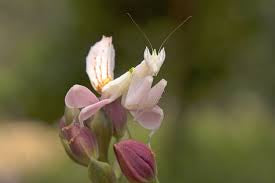
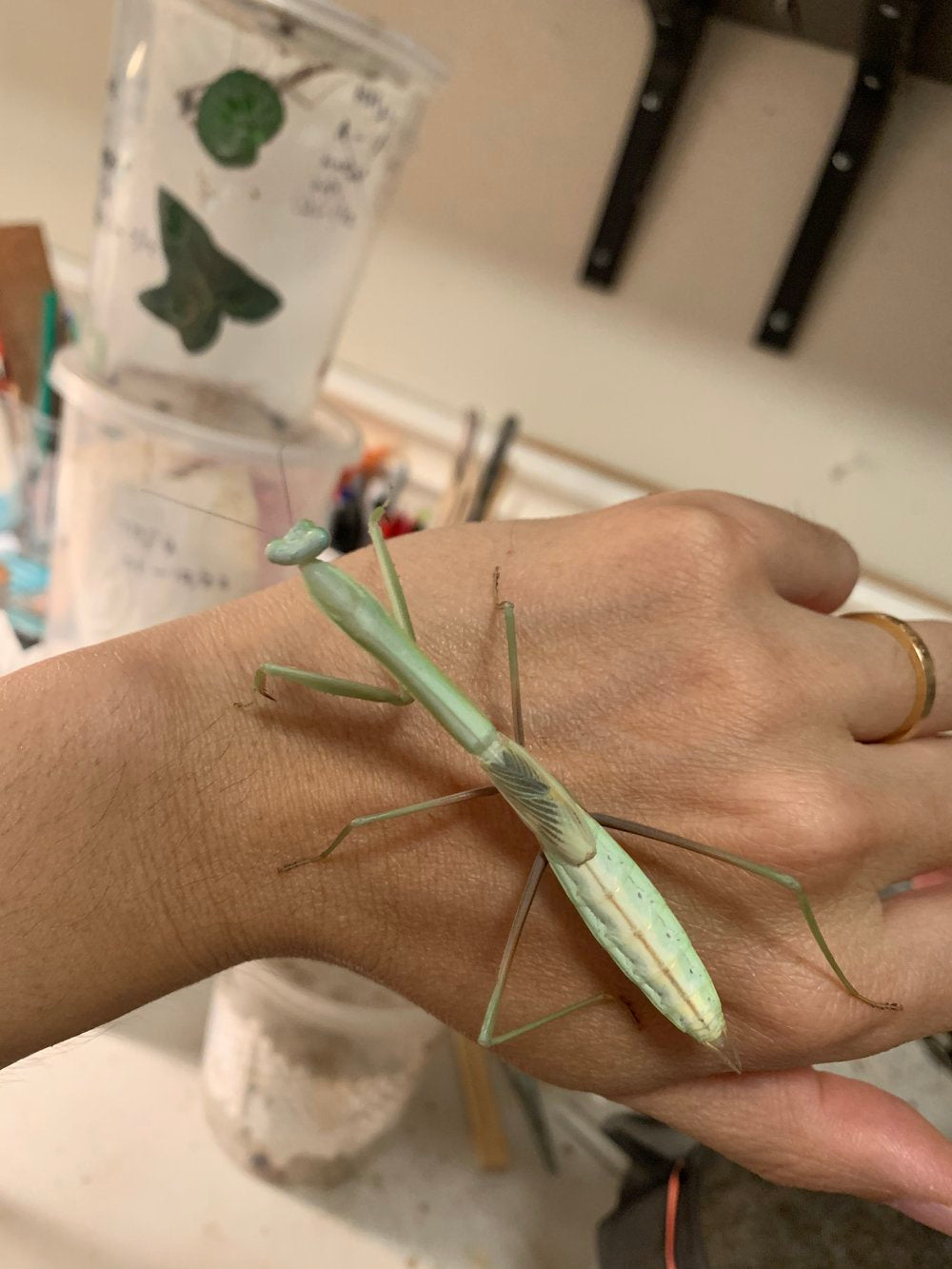
Hymenopus coronatus - Orchid Flower mantis "Kung Fu Mantis"
$65.00 - $600.00
Hymenopus coronatus - Orchid Flower mantis. You can choose to get male or female L4-L5 on this page.
- UPS Next Day air or USPS Express shipping is required for this species
The most wanted and most beautiful praying mantis species available upon the market.
Adult females grow up to 3.5 inches in length
Hymenopus coronatus Orchid mantis, pink orchid mantis
They originate from India, the surrounding Islands, and East to Thailand and Malaysia. Orchid mantids are one of the most beautiful Mantids in the world. The oothecas take 2 months to hatch. The temperature should be kept at 30-35C during the day time. The temperature should not fall under 20°C at night and is best at 25°C.
Females: get 6 cm long.
Males: get 3 cm long. They become adults after the 6th instar.
Diet: Drosophila, houseflies, crickets, flour worms. The feed must be very diversified. To the newly hatched larvae must be promptly offered Drosophila flies.
Diet for Nymphs for the best results must include: Drosophila, Wax Worms (Don't feed crickets), Crickets (although many crickets carry parasites, so the mantis can potentially die from them later in life)
Habitat
The Orchid Mantis (Hymenopus coronatus) should be kept in an enclosure that is at least three times as tall as the mantis is long and at least two times as wide as the mantis is long. The gender of your mantis is a very important consideration when deciding on what size enclosure to purchase. This is because as an adult, females can get up to 3 inches long, while males can be less than 1 inch long as an adult.
The enclosure must also have adequate ventilation, some kind of material on the ceiling that will allow the mantis to hang upside down during molting, and an empty space at the top that is at least two times the size of the mantis. They can be kept in glass or mesh cages, but enclosures with glass or clear plastic sides and a mesh or screen top are ideal due to this species' humidity requirements.
Orchids do best in a living vivarium with live plants and microfauna (e.g., springtails and isopods) who will act as a sort of "clean up crew" by breaking down the mantis's waste and food scraps, thereby reducing the build-up of mold and bacteria that can make your mantis sick or even die. You can certainly keep them in temporary enclosures with fake flowers and no substrate or with an easily disposable substrate such as sphagnum moss or just a paper towel; however, if you choose this approach, you must be diligent about cleaning the enclosure and replacing the substrate at least once a week because the humid conditions required for this species will promote the growth of mold and dangerous bacteria without a healthy population of micro-fauna to help keep it in check.
Temperature & Humidity
Orchid mantises are native to the tropical rainforests of Malaysia, so they generally need warm, humid conditions to thrive. The ideal temperature for an orchid mantis is 80°F to 85°F, but they can tolerate a range between 70°F and 90°F. Humidity should be kept above 60% relative humidity (RH), though younger nymphs seem less tolerant of higher humidity levels than adults. Nymphs should be kept at the lower humidity range, between 60% and 70% RH. Ventilation is also very important in the nymph stage. L1 nymphs, in particular, should be kept in a well-ventilated enclosure with a top that allows for good airflow.
Depending on the amount of ventilation, the enclosure should be given a light misting once a day. Orchid mantises kept in mesh or screen cages should have their enclosures misted twice daily to maintain proper humidity. Not only that, but misting the enclosure also allows the orchid mantis to drink. Most mantises do not like getting sprayed directly, so it is best to try to spray around the mantis. It is usually no big deal if you get them a little wet by accident. Use spring, distilled, or water filtered by reverse osmosis (RO), but do not use plain tap water.
Feeding
Orchid mantises prefer flying insects throughout their entire lifecycle.
- L1 and L2 nymphs: Should be fed D. melanogaster fruit flies.
- L3 and L4 nymphs Should be fed D. hydei fruit flies.
- L5 nymph to adult: Should be fed house flies, hoverflies, blue bottle flies, butterflies, and moths.
- UPS Next Day air or USPS Express shipping is required for this species
Note: ooths are never guaranteed.
We confirm they are fertile when sent; however, they require expert care to hatch. They can be easily compromised while incubating. Conditions for incubating require experienced handling, and we assume no responsibility.

